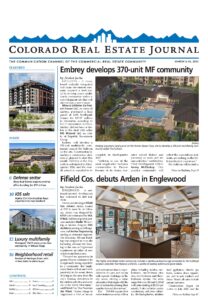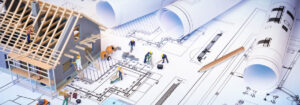Building a resilient community by design.
Resiliency is the ability to withstand or recover quickly from changing or difficult conditions. Few things are more critical than the resiliency of a community, whether that community is an entire region, a neighborhood, or an individual building made up of a resident population. In the struggle to make the economics work on projects these days with rising development costs, land costs, and construction costs across the board, it’s important not to lose sight of what really makes these developments work – The people who live there.
Five key components to resilient communities:
-Quality buildings and amenities: There’s tremendous data that ties the quality of the built environment directly to the reduction of vandalism and crime. This requires conscious investment in new design, and the returns on these investments extend long into the future. Existing projects should seriously consider the value of elevating the quality of their environment and upgrading amenities that are in need of improvement or perhaps altogether missing. Great places are essential to a community and become a strong source of pride. When people have pride in their places, they care more and work actively to keep them nice.
–Proper distribution of services and amenities: Communities lacking services and amenities are the first to deteriorate. Adding any stress to residents ultimately weakens the overall community. Places like food deserts are hard on the resident population. Amenities also serve a community by providing activity centers for building relationships and strong bonds. In new construction programming, considered thought needs to be put into what purposes the project could serve beyond just housing density. What mix of additional uses are lacking in the surrounding area that would serve the residents best? Design and build those elements into the project along with the flexibility to make changes to changing needs over time, and it will go far to create resiliency in the project.
-Security: There is a fundamental human need to be secure in their community. Regardless of where a project is located, a building needs to address security needs a number of ways. Not only from the intrusion of outsiders but also the security of each resident in their space and a sense of privacy. When this basic need for security is breached, the community quickly becomes unstable. While security is typically thought of as a technological concern, many features are a function of design. Making shared public spaces highly visible to residents while also making private resident space secure and out of view. Preventing areas within a campus that invite trouble by thoughtful design should be central to every design program.
-Property Ownership: It has long been well understood that owners are more vested than renters. Pride of Ownership yields long term benefits to a project such as strong bonds to the property. Of course, not every project can offer true ownership in the real estate itself; however, ownership can take on a wide variety of alternative meanings beyond financial investment. Residents want to have a sense of control over their environment. Beyond the requisite security and control over their individual unit, control over other elements of their daily life such as a reliable place to park their vehicle or store their belongings, or a sense of certainty of their ability to use shared amenities. The more control a resident has over their environment, the more stable the community will be. Every project can offer opportunities by design or by management for residents to have an ownership stake in something they can control. Beyond daily needs, other features in a project such as a plot in a shared garden or a reliable workspace available to them can reap significant rewards. These are the kinds of things that drive residents to truly care about where they live.
-Shared values among community members: Shared values among a group of people enables a strong community alliance that can endure all sorts of difficult situations. This is a far more interesting characteristic to design for, as it asks the question “what do people who want to live here believe in“. While some communities historically have tried to group residents on the basis of generation, ethnicity, religion or social class because of a misguided belief that shared values are somehow tied to uniformity in population, shared values have nothing to do with these or any of the myriad of social groups that are known more for divisive thinking. In fact, the greater diversity of people with common values are often much stronger than less diverse communities. How can this be addressed by design? Start with considering the kind of values that you are seeking to attract to your project. People with strong values geared towards family might be well supported by units and amenities that serve the needs of parents or children. Or perhaps a population who believes strongly in sustainable living might form a strong community in a building that exudes those characteristics. Forming a community around something that people strongly believe in creates tight bonds that sustain.










